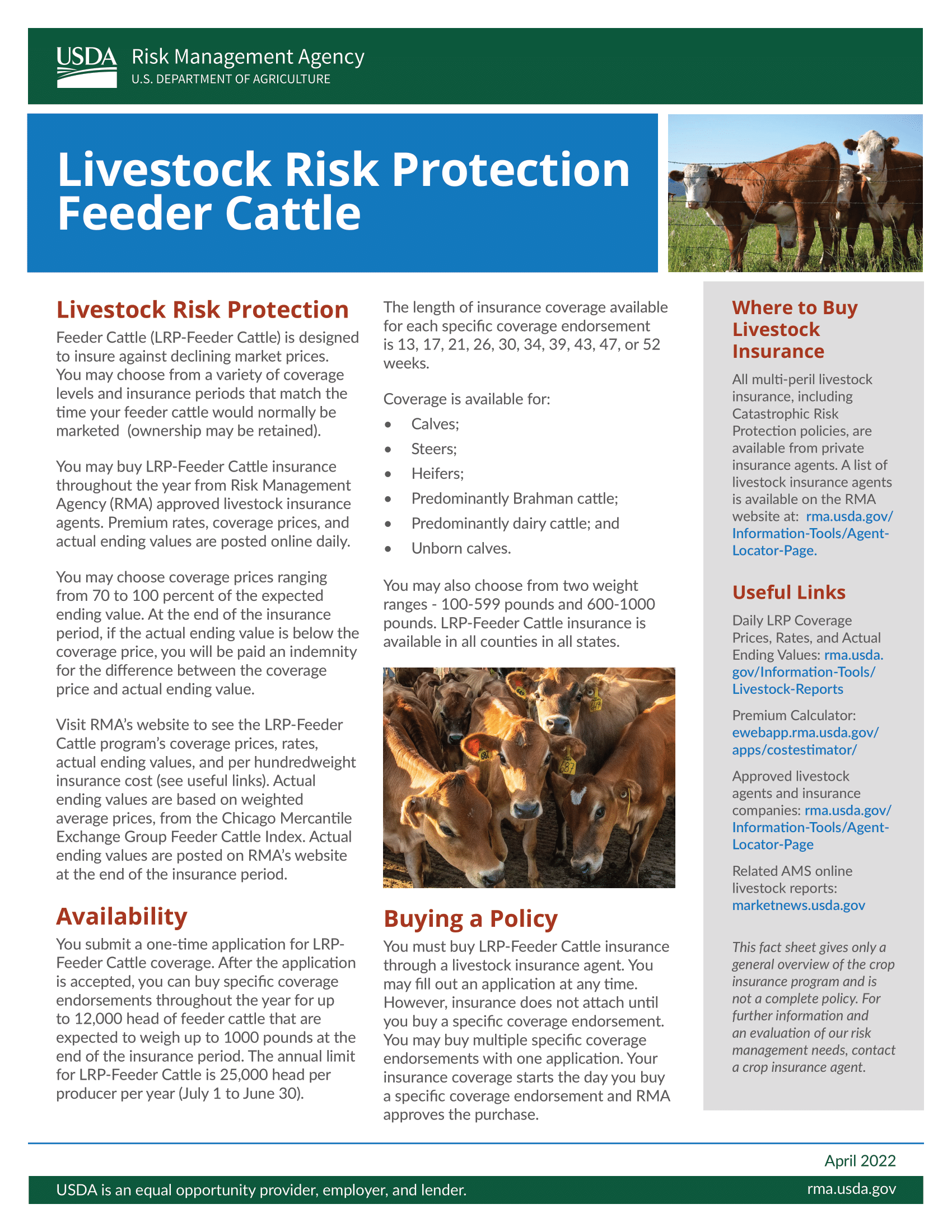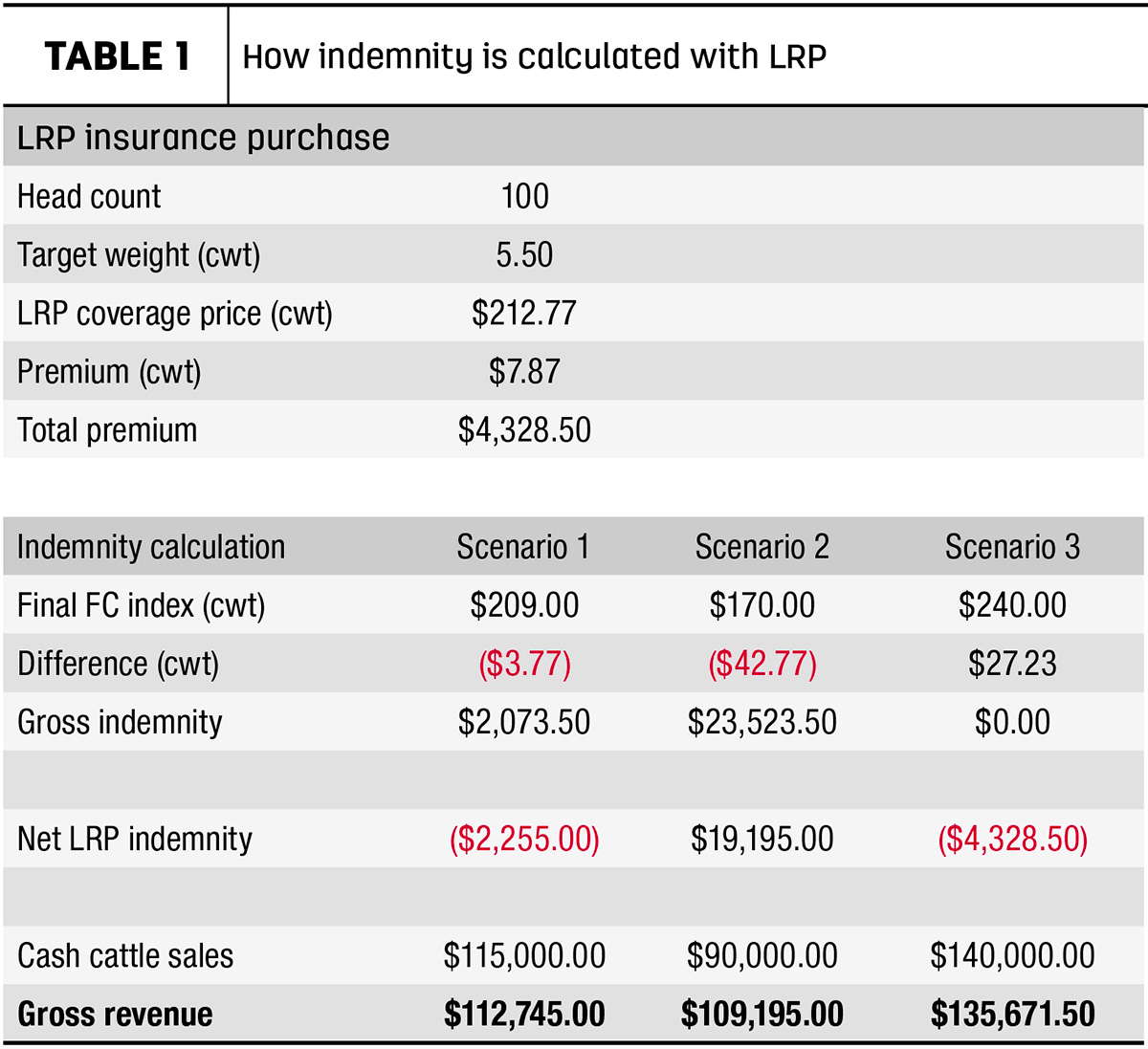Protecting Success: Bagley Risk Management Services
Wiki Article
Recognizing Livestock Risk Defense (LRP) Insurance: A Comprehensive Guide
Navigating the world of livestock threat security (LRP) insurance policy can be a complex venture for lots of in the agricultural field. This sort of insurance provides a safety and security web versus market variations and unforeseen scenarios that might influence animals producers. By comprehending the details of LRP insurance coverage, producers can make enlightened decisions that might secure their operations from financial dangers. From just how LRP insurance policy operates to the numerous insurance coverage alternatives readily available, there is much to discover in this extensive overview that could potentially form the method animals manufacturers approach danger management in their businesses.

Exactly How LRP Insurance Coverage Works
Sometimes, comprehending the technicians of Livestock Risk Protection (LRP) insurance can be intricate, yet damaging down exactly how it works can give clarity for farmers and ranchers. LRP insurance is a threat management tool developed to safeguard livestock producers versus unforeseen price decreases. The plan allows producers to set an insurance coverage level based upon their particular needs, selecting the variety of head, weight range, and coverage cost. Once the policy remains in location, if market value fall listed below the protection price, manufacturers can file a case for the difference. It is necessary to keep in mind that LRP insurance is not an income assurance; instead, it focuses only on rate threat security. The insurance coverage period commonly varies from 13 to 52 weeks, providing flexibility for producers to choose a duration that aligns with their production cycle. By using LRP insurance coverage, farmers and breeders can mitigate the economic dangers connected with varying market value, guaranteeing better security in their operations.Qualification and Coverage Options

When it comes to coverage alternatives, LRP insurance provides producers the adaptability to choose the insurance coverage level, insurance coverage period, and endorsements that finest suit their threat administration demands. Insurance coverage levels generally vary from 70% to 100% of the anticipated ending value of the insured livestock. Producers can also select coverage durations that straighten with their production cycle, whether they are insuring feeder livestock, fed cattle, swine, or lamb. Endorsements such as price risk defense can even more tailor protection to shield against adverse market fluctuations. By comprehending the eligibility requirements and coverage alternatives available, animals producers can make informed decisions to take care of risk effectively.
Advantages And Disadvantages of LRP Insurance Policy
When examining Animals Threat Security (LRP) insurance policy, it is important for animals producers to weigh the benefits and drawbacks inherent in this danger administration tool.
Among the primary benefits of LRP insurance coverage is its capability to supply security versus a decrease in animals prices. This can help safeguard manufacturers from economic losses resulting from market changes. Additionally, LRP insurance uses a degree of adaptability, enabling producers to customize coverage levels and policy periods to suit their particular demands. By securing an ensured rate for their animals, manufacturers can much better manage risk and prepare for the future.
However, there are additionally some disadvantages to consider. One restriction of LRP insurance policy is that it does not shield against all sorts of dangers, such as condition episodes or natural catastrophes. Moreover, costs can often be costly, specifically for manufacturers with huge livestock herds. It is vital for producers to very carefully analyze their private risk direct exposure and financial scenario to figure out if LRP insurance is the ideal threat administration device for their operation.
Understanding LRP Insurance Premiums

Tips for Maximizing LRP Advantages
Maximizing the benefits of Livestock Threat Defense (LRP) insurance coverage calls for calculated planning and positive risk management - Bagley Risk Management. To make the most of your LRP coverage, think about the complying with pointers:Consistently Analyze Market Conditions: Stay informed concerning market patterns and rate variations in the animals industry. By keeping track of these variables, you can make enlightened choices regarding when to acquire LRP protection to protect against prospective losses.
Set Realistic Protection Degrees: When choosing insurance coverage degrees, consider your production prices, market worth of animals, and potential dangers Visit Your URL - Bagley Risk Management. Setting practical protection degrees guarantees that you are properly secured without overpaying for unnecessary insurance policy
Expand Your Protection: Rather than depending solely on LRP insurance policy, take into consideration diversifying your danger administration strategies. Combining LRP with other threat management devices such as futures contracts or choices can supply extensive protection versus market uncertainties.
Review and Adjust Insurance Coverage Regularly: As market conditions change, periodically examine your LRP insurance coverage to guarantee it aligns with your current risk exposure. Readjusting coverage degrees and timing of purchases can aid maximize your threat protection approach. By adhering to these tips, you can take full advantage of the advantages of LRP insurance policy and guard your livestock operation versus unforeseen risks.
Conclusion
Finally, livestock threat security (LRP) insurance policy is a beneficial tool for farmers to manage the financial threats connected with their animals operations. By comprehending exactly how LRP functions, qualification and insurance coverage alternatives, along with the advantages and disadvantages of this insurance policy, farmers can make enlightened choices to secure their source of incomes. By very carefully thinking about LRP costs and implementing strategies to optimize advantages, farmers can minimize prospective losses and ensure the sustainability of their operations.
Livestock producers interested in getting Livestock Threat Defense (LRP) insurance can check out a range of eligibility criteria and protection choices customized to their certain animals procedures.When it comes to coverage choices, LRP insurance provides producers the adaptability to pick the insurance coverage degree, coverage period, and recommendations that finest fit their risk monitoring needs.To anonymous comprehend the intricacies of Livestock Threat Defense (LRP) insurance totally, understanding the elements affecting LRP insurance policy costs is vital. LRP insurance premiums are established by numerous aspects, consisting of the coverage degree chosen, the expected cost of livestock at the end of the protection period, the kind of animals being insured, and the size of the protection period.Testimonial and look at more info Change Coverage Regularly: As market problems alter, occasionally assess your LRP insurance coverage to ensure it aligns with your present risk exposure.
Report this wiki page